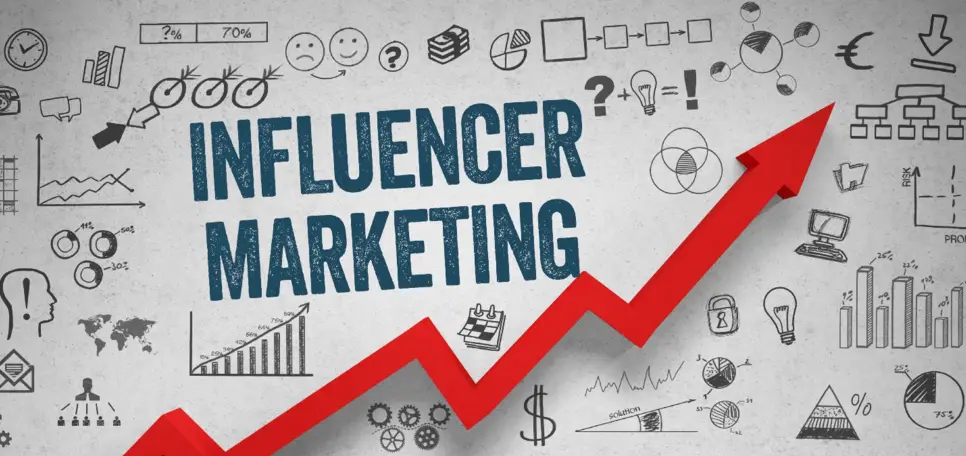Types of Influencer Marketing
(Types of Influencer Marketing) In today’s digital age, influencer marketing has become an indispensable tool for businesses aiming to reach and engage their target audiences effectively. This dynamic marketing strategy leverages the credibility and reach of individuals who have established a significant following in various niches. In this article, we’ll dive into the diverse landscape of influencer marketing and explore different types of influencer collaborations that can supercharge your brand’s presence.
Introduction
Influencer marketing has evolved far beyond the early days of celebrity endorsements. Today, it encompasses a wide array of strategies and collaborations, each tailored to meet specific marketing objectives. By understanding these diverse approaches, businesses can make informed decisions on which type of influencer marketing suits their needs best.
The Power of Influencer Marketing

Before we delve into the various types of influencer marketing, let’s reiterate why this strategy is so effective. Influencer marketing leverages the trust and authenticity that influencers have built with their followers. When influencers promote a product or service, it often feels like a recommendation from a friend, leading to higher engagement and conversion rates.
Types of Influencer Marketing

1. Nano-Influencers
(Types of Influencer Marketing) Nano-influencers have a relatively small but highly engaged following, often in the range of 1,000 to 10,000 followers. They excel at creating authentic, personal connections with their audience, making them ideal for niche products or local businesses.
2. Micro-Influencers
(Types of Influencer Marketing) Micro-influencers have slightly larger followings, typically ranging from 10,000 to 100,000 followers. They maintain a strong connection with their audience and often focus on specific niches, allowing for highly targeted marketing.
3. Macro-Influencers
(Types of Influencer Marketing) Macro-influencers boast followings in the hundreds of thousands to millions. They offer broad reach and are suitable for brands aiming for widespread exposure. However, they may have slightly lower engagement rates compared to micro-influencers.
4. Celebrity Influencers
(Types of Influencer Marketing) These are well-known figures, such as actors, athletes, or musicians, with massive followings. Collaborating with celebrity influencers can give your brand unparalleled visibility, but it can come at a substantial cost.
5. Social Media Takeovers
(Types of Influencer Marketing) In this approach, an influencer temporarily takes over a brand’s social media account. This strategy injects fresh energy into your social media presence and offers a unique perspective to your audience.
6. Affiliate Marketing with Influencers
(Types of Influencer Marketing) Affiliate marketing involves influencers promoting products or services with a unique affiliate link. They earn a commission for each sale generated through their link, making it a performance-driven strategy.
7. Co-Creation Campaigns
(Types of Influencer Marketing) Co-creation campaigns involve influencers actively participating in the creation of content or products for your brand. This collaboration can result in highly engaging and authentic content.
8. Event Collaborations
(Types of Influencer Marketing) Brands can partner with influencers to host or participate in events, whether in-person or virtual. These events can generate buzz and engagement, especially when influencers actively promote them.
9. Ambassador Programs
(Types of Influencer Marketing) Ambassador programs entail long-term collaborations with influencers who become brand advocates. They consistently promote your products or services over an extended period, building credibility and trust.
Choosing the Right Type for Your Brand

Choosing the Right Type for Your Brand
The choice of influencer marketing type depends on your brand’s goals, target audience, and budget. Smaller businesses might find success with nano or micro-influencers, while larger brands may opt for macro-influencers or celebrities. The key is aligning the influencer’s niche and reach with your objectives.
Measuring Success in Influencer Marketing

Measuring Success in Influencer Marketing
To gauge the effectiveness of your influencer marketing campaigns, track key performance indicators (KPIs) such as reach, engagement, click-through rates, and conversions. Additionally, monitor brand sentiment and customer feedback to assess the impact on your brand’s image.
Leveraging Influencer Collaborations for Success

Leveraging Influencer Collaborations for Success
In the digital age, influencer marketing has emerged as a powerful tool for businesses to connect with their audience and drive results. To truly harness the potential of influencer marketing, here are some key considerations:
Authenticity is Key
Regardless of the type of influencer marketing you choose, authenticity should be at its core. Audiences are drawn to content that feels genuine and relatable. Encourage influencers to be themselves when promoting your brand, and avoid overly scripted or promotional content.
The Value of Niche Expertise
Nano and micro-influencers often excel in niche markets. Their expertise and passion for a particular subject can resonate deeply with their followers. If your brand caters to a specific niche, collaborating with influencers who are passionate about that niche can lead to highly engaged and loyal customers.
Diversify Your Influencer Portfolio
Consider diversifying your influencer portfolio. Partnering with a mix of nano, micro, macro, and celebrity influencers can help you reach various audience segments. This approach can also mitigate risks associated with over-reliance on a single influencer.
Creative Co-Creation
Co-creation campaigns with influencers can result in innovative and engaging content. Encourage influencers to share their unique perspective and ideas, fostering a creative partnership that benefits both parties and captivates the audience.
Harnessing the Power of Stories
Stories have become a popular format across social media platforms. Influencers often use this feature to provide an authentic, behind-the-scenes look at their lives or their experience with your brand. Utilize stories to convey your brand message in a more personal and relatable manner.
Transparency and Disclosure
As influencer marketing regulations continue to evolve, transparency and disclosure are crucial. Ensure that influencers clearly disclose their partnerships with your brand to maintain trust with their followers and stay compliant with advertising guidelines.
Measuring ROI
To measure the success of your influencer marketing campaigns, go beyond vanity metrics like follower count and likes. Focus on conversion rates, revenue generated, and the impact on brand sentiment. Tools and analytics platforms can help you assess the true ROI of your influencer collaborations.
Conclusion
Influencer marketing is a dynamic and versatile strategy that can transform your brand’s visibility and engagement. By understanding the various types of influencer collaborations available, businesses can tailor their approach to suit their unique needs and goals. Whether you’re looking to reach a niche audience or make a big splash on a global scale, influencer marketing offers a pathway to success.
If you have more questions about influencer marketing or need assistance with your influencer marketing strategy, don’t hesitate to reach out. Influencer marketing is a dynamic and ever-changing field, and staying informed and adaptable is key to making the most of it for your brand’s success.
FAQs
What is the difference between micro and macro-influencers?
Micro-influencers have smaller but highly engaged followings, while macro-influencers have larger, more extensive reach. Micro-influencers often offer niche expertise, while macro-influencers provide broader exposure.
How do I find the right influencer for my brand?
Identify influencers whose niche, values, and audience align with your brand. Use influencer discovery tools and analyze their past collaborations and engagement rates to make an informed choice.
Can influencer marketing work for B2B businesses?
Yes, influencer marketing can be effective for B2B businesses. Partnering with industry experts or thought leaders can help establish credibility and reach a relevant audience.
What are the key performance indicators (KPIs) for influencer marketing?
KPIs for influencer marketing include reach, engagement rates, click-through rates, conversions, and return on investment (ROI).
Is it possible to collaborate with multiple influencers simultaneously?
Yes, you can collaborate with multiple influencers simultaneously to expand your reach and engage diverse audience segments. However, effective management and coordination are essential for success.
By embracing the diversity of influencer marketing and choosing the right approach for your brand, you can unlock the full potential of this strategy and make meaningful connections with your target audience. If you have any more questions or need further guidance on influencer marketing, feel free to reach out.




